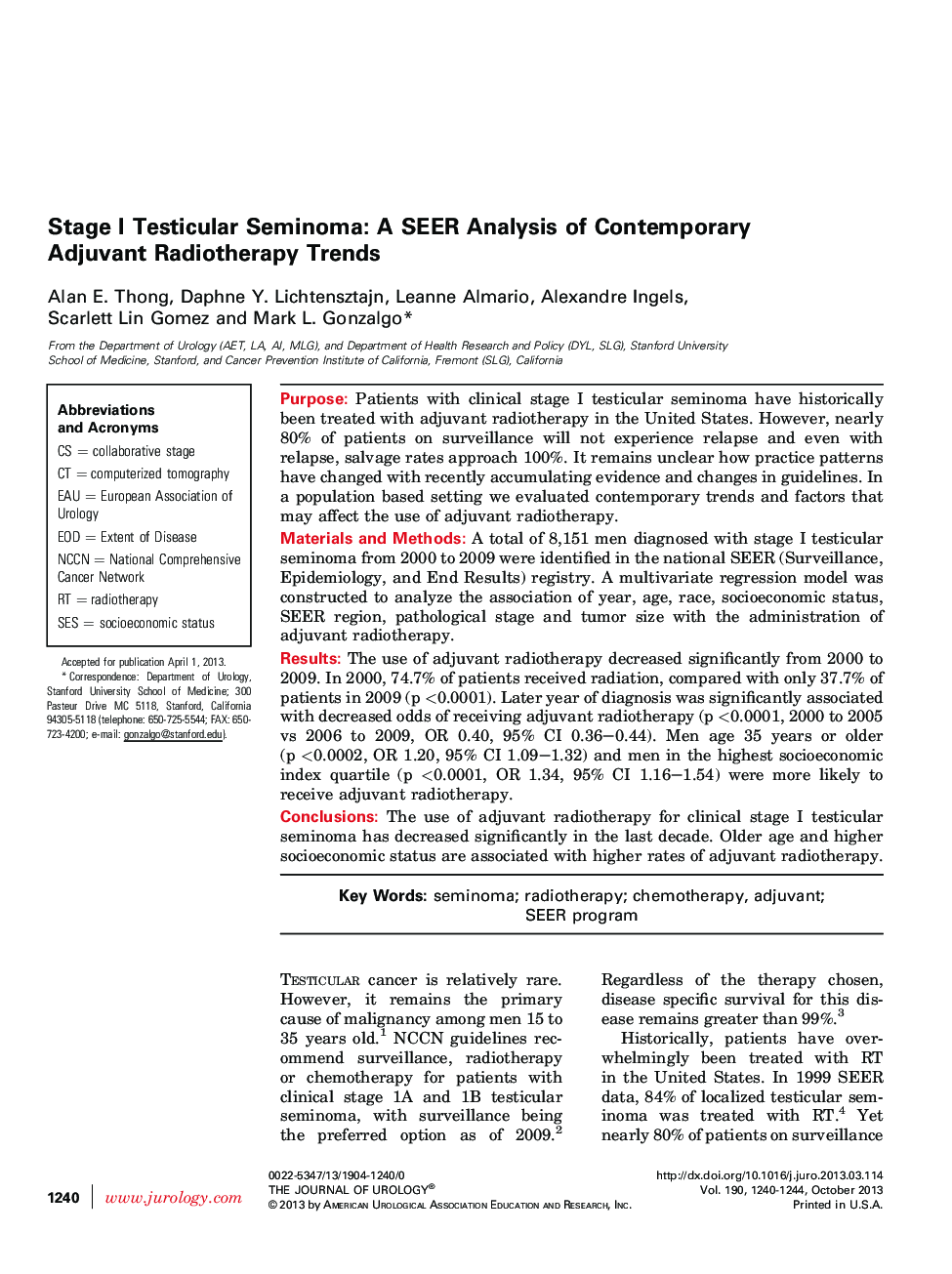| Article ID | Journal | Published Year | Pages | File Type |
|---|---|---|---|---|
| 3864141 | The Journal of Urology | 2013 | 5 Pages |
PurposePatients with clinical stage I testicular seminoma have historically been treated with adjuvant radiotherapy in the United States. However, nearly 80% of patients on surveillance will not experience relapse and even with relapse, salvage rates approach 100%. It remains unclear how practice patterns have changed with recently accumulating evidence and changes in guidelines. In a population based setting we evaluated contemporary trends and factors that may affect the use of adjuvant radiotherapy.Materials and MethodsA total of 8,151 men diagnosed with stage I testicular seminoma from 2000 to 2009 were identified in the national SEER (Surveillance, Epidemiology, and End Results) registry. A multivariate regression model was constructed to analyze the association of year, age, race, socioeconomic status, SEER region, pathological stage and tumor size with the administration of adjuvant radiotherapy.ResultsThe use of adjuvant radiotherapy decreased significantly from 2000 to 2009. In 2000, 74.7% of patients received radiation, compared with only 37.7% of patients in 2009 (p <0.0001). Later year of diagnosis was significantly associated with decreased odds of receiving adjuvant radiotherapy (p <0.0001, 2000 to 2005 vs 2006 to 2009, OR 0.40, 95% CI 0.36–0.44). Men age 35 years or older (p <0.0002, OR 1.20, 95% CI 1.09–1.32) and men in the highest socioeconomic index quartile (p <0.0001, OR 1.34, 95% CI 1.16–1.54) were more likely to receive adjuvant radiotherapy.ConclusionsThe use of adjuvant radiotherapy for clinical stage I testicular seminoma has decreased significantly in the last decade. Older age and higher socioeconomic status are associated with higher rates of adjuvant radiotherapy.
